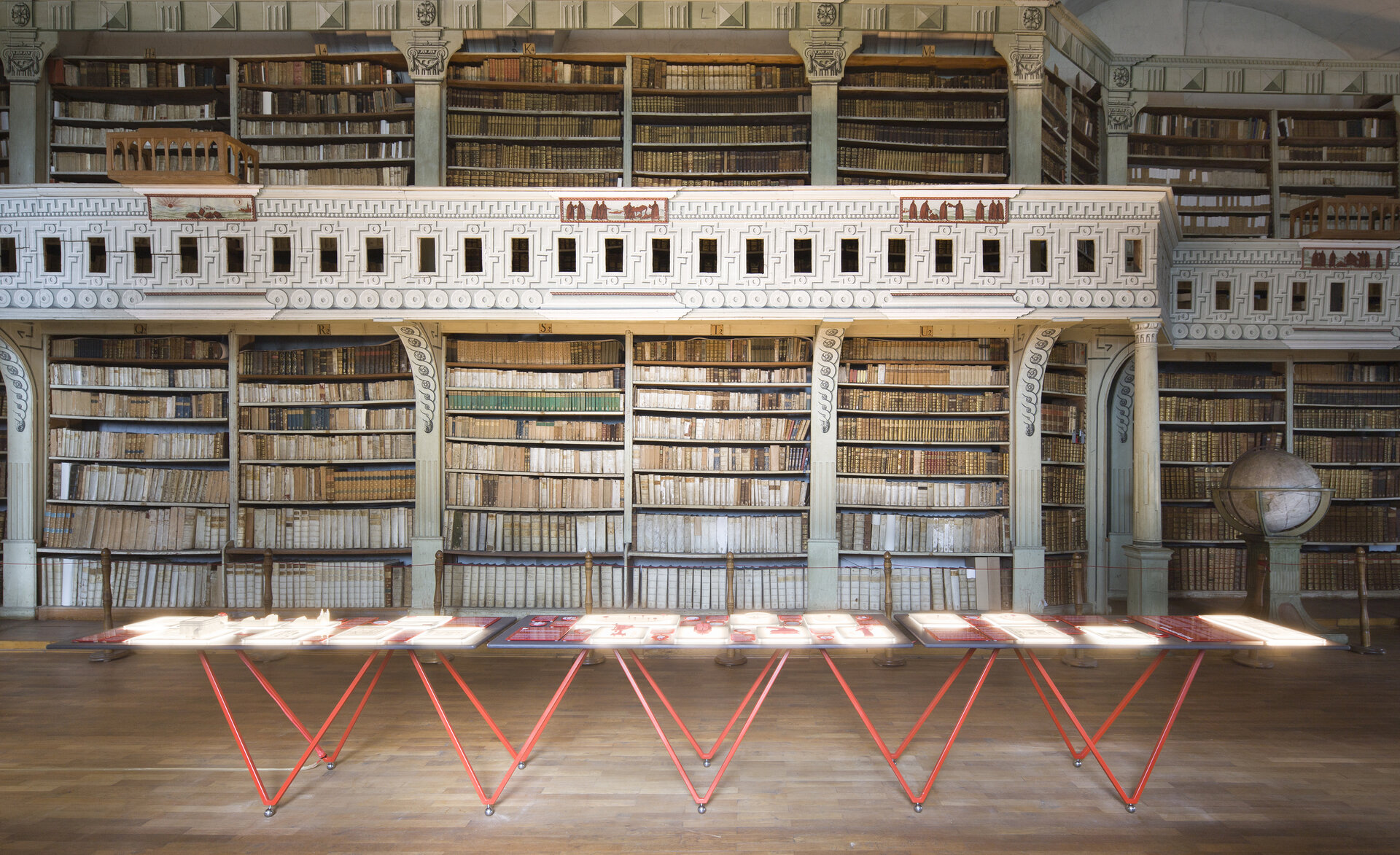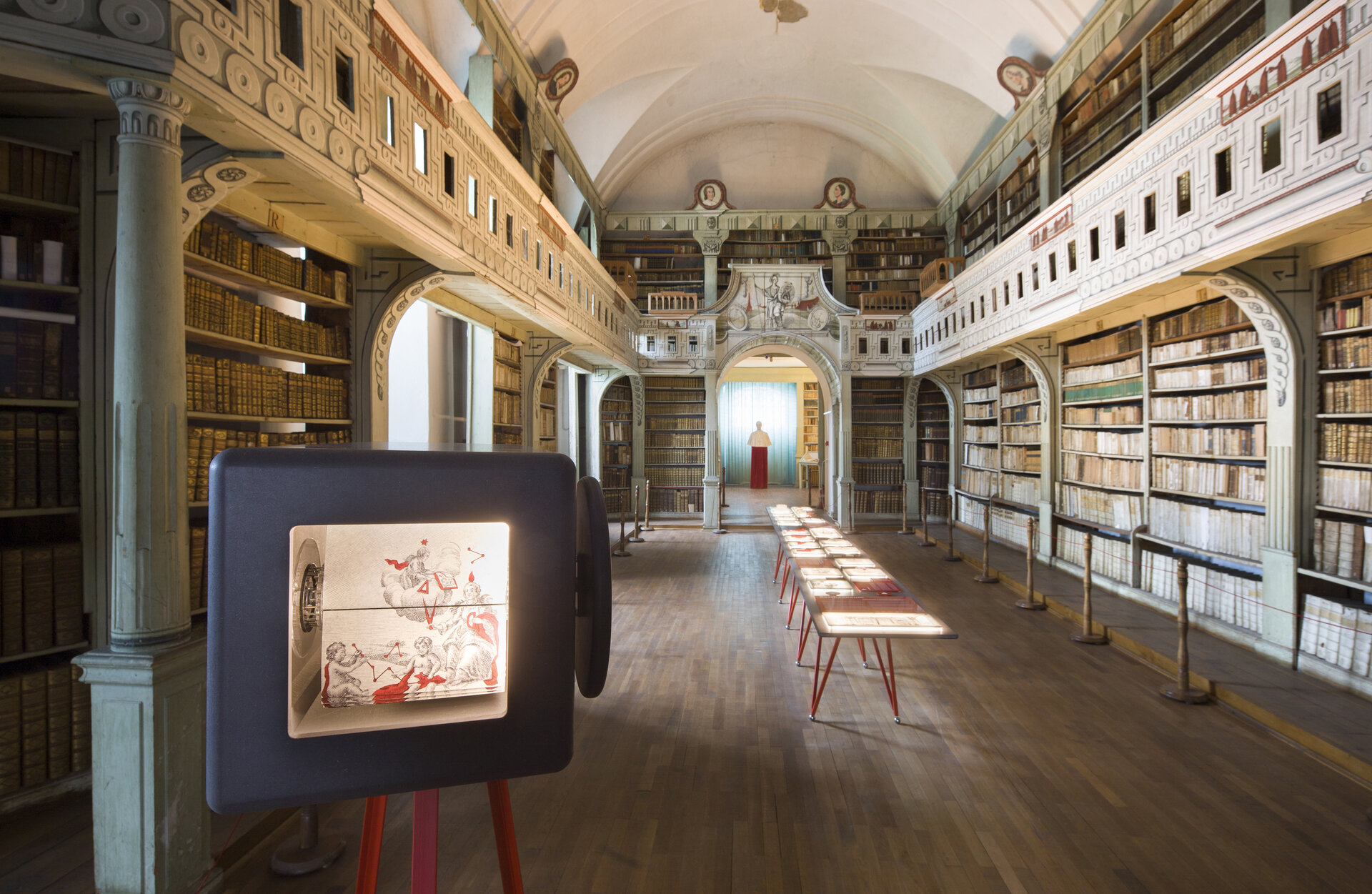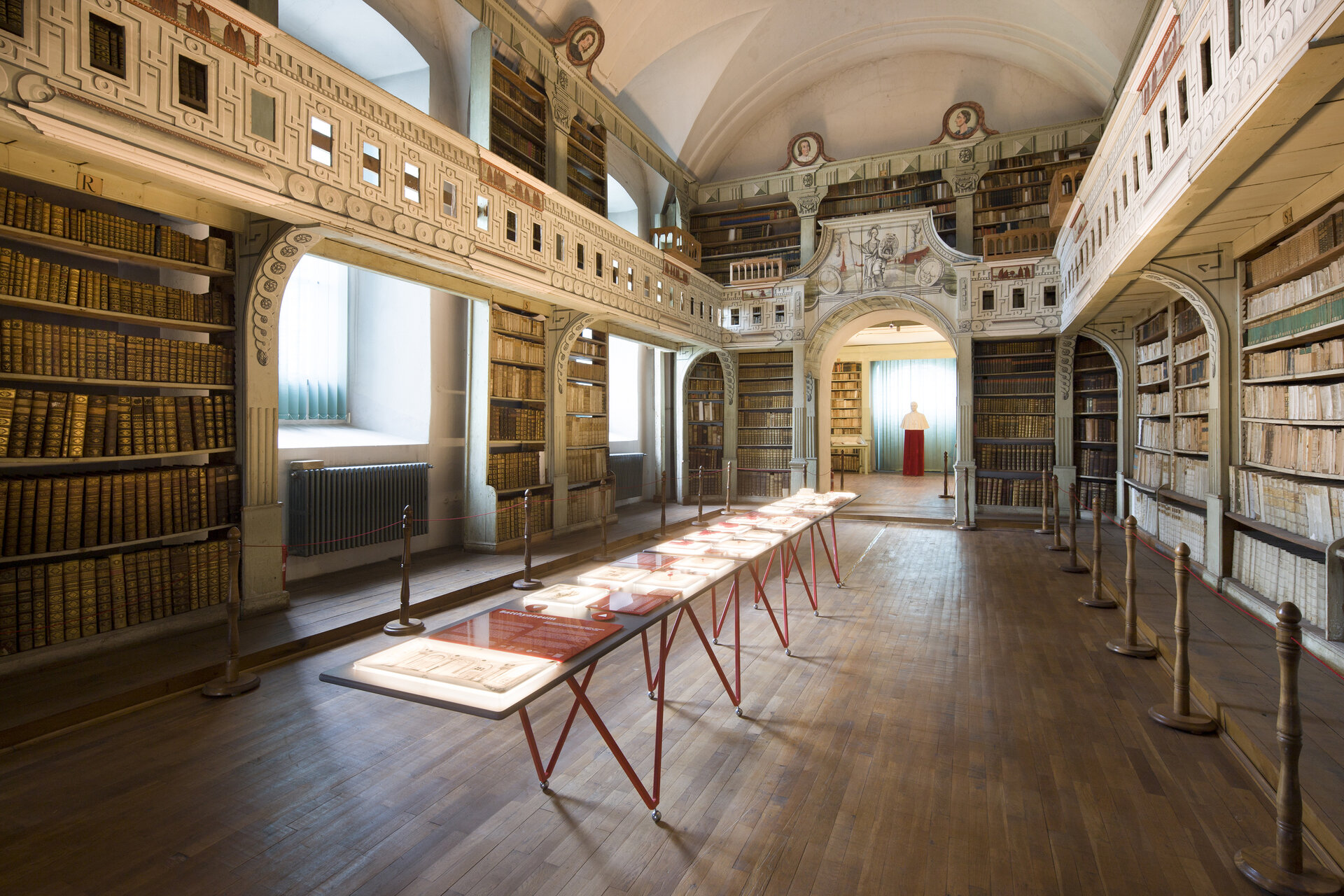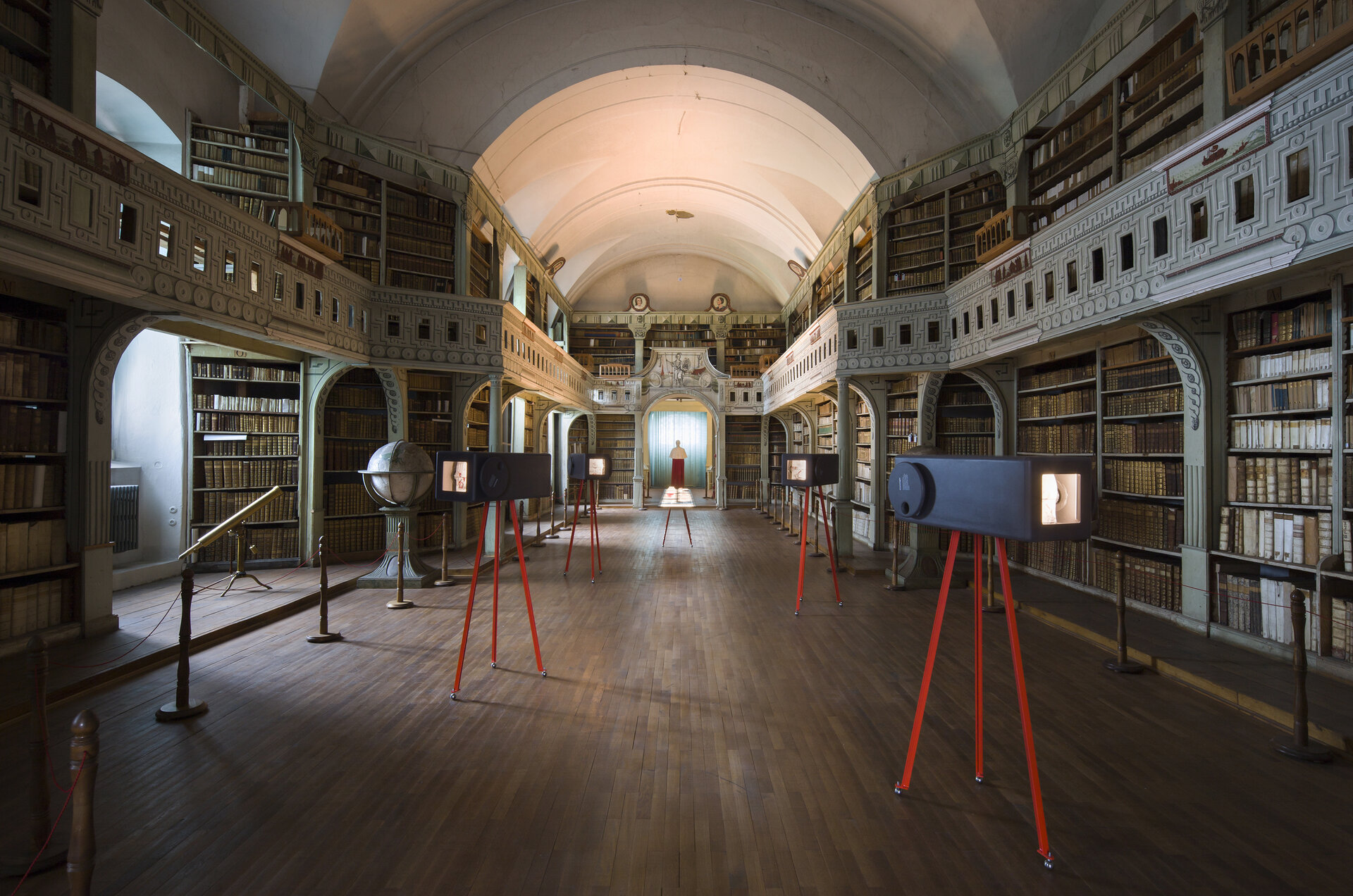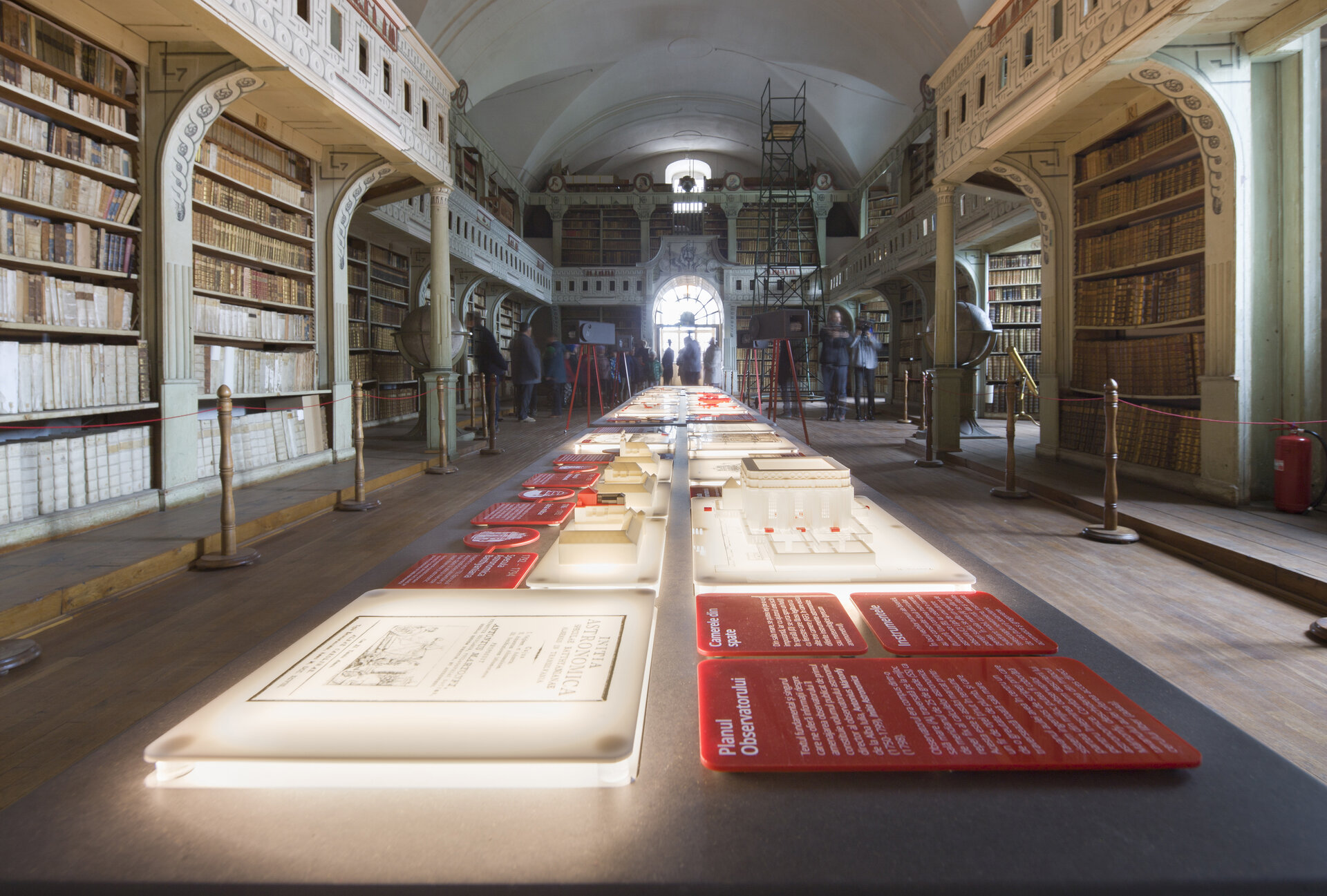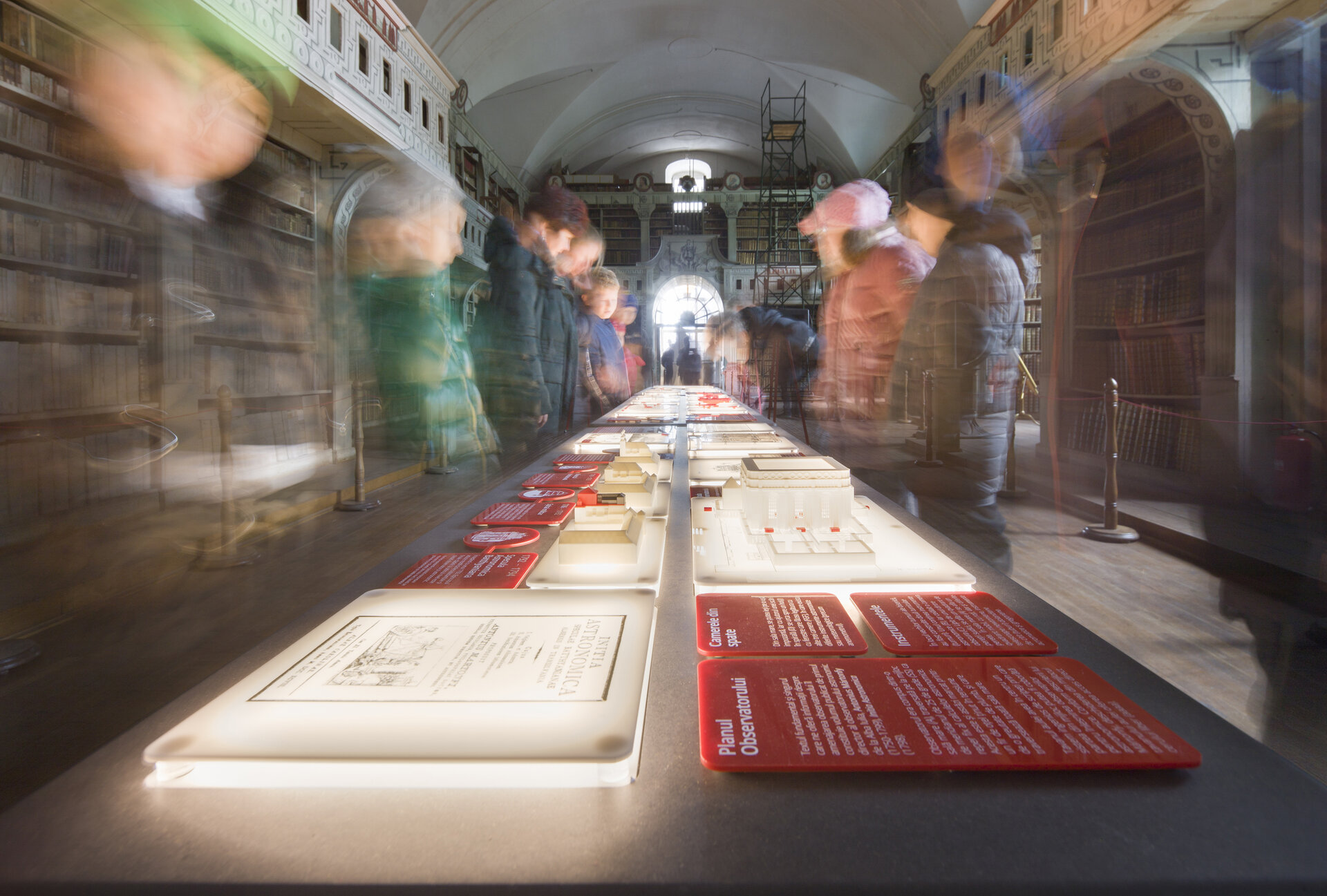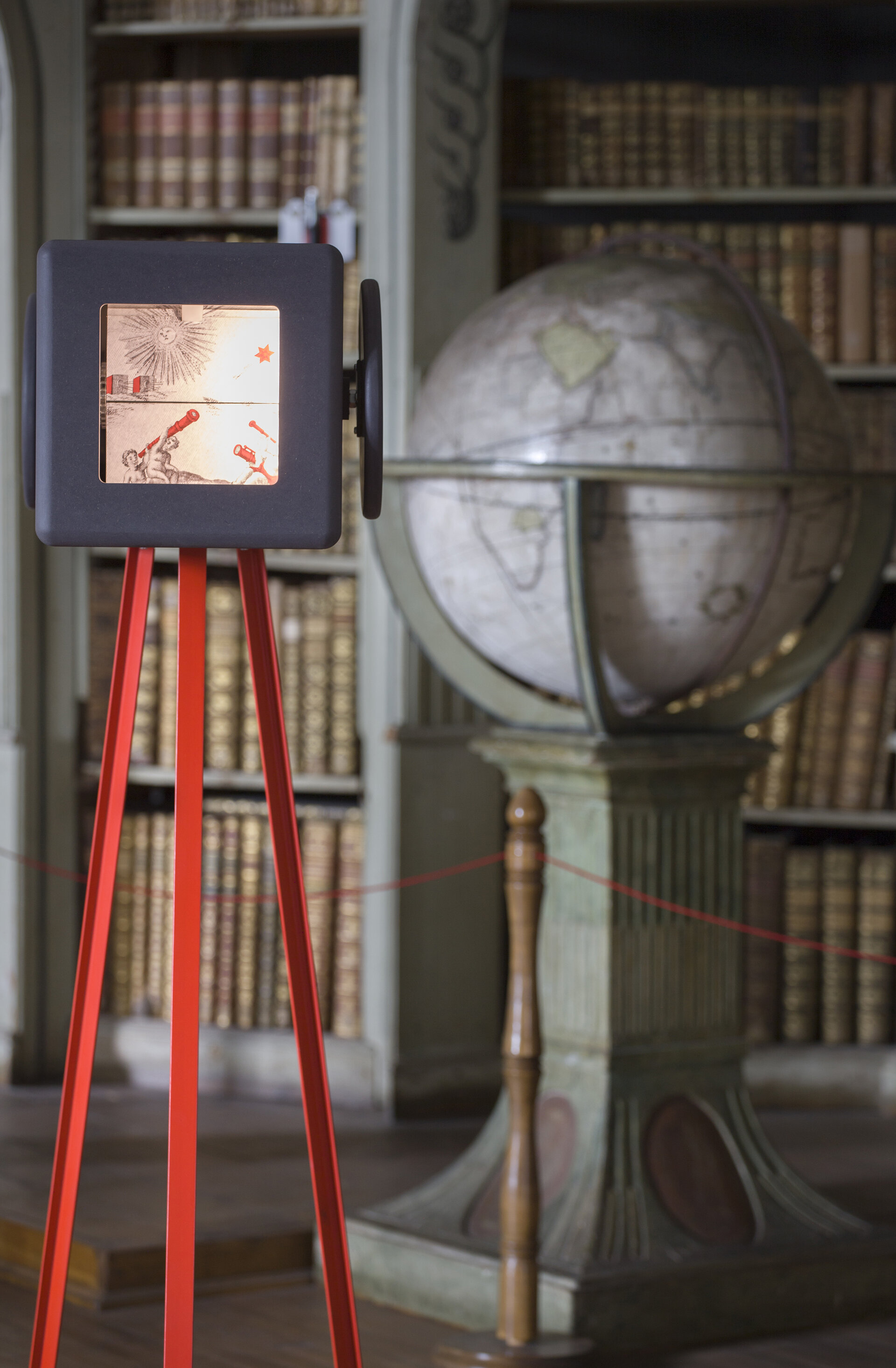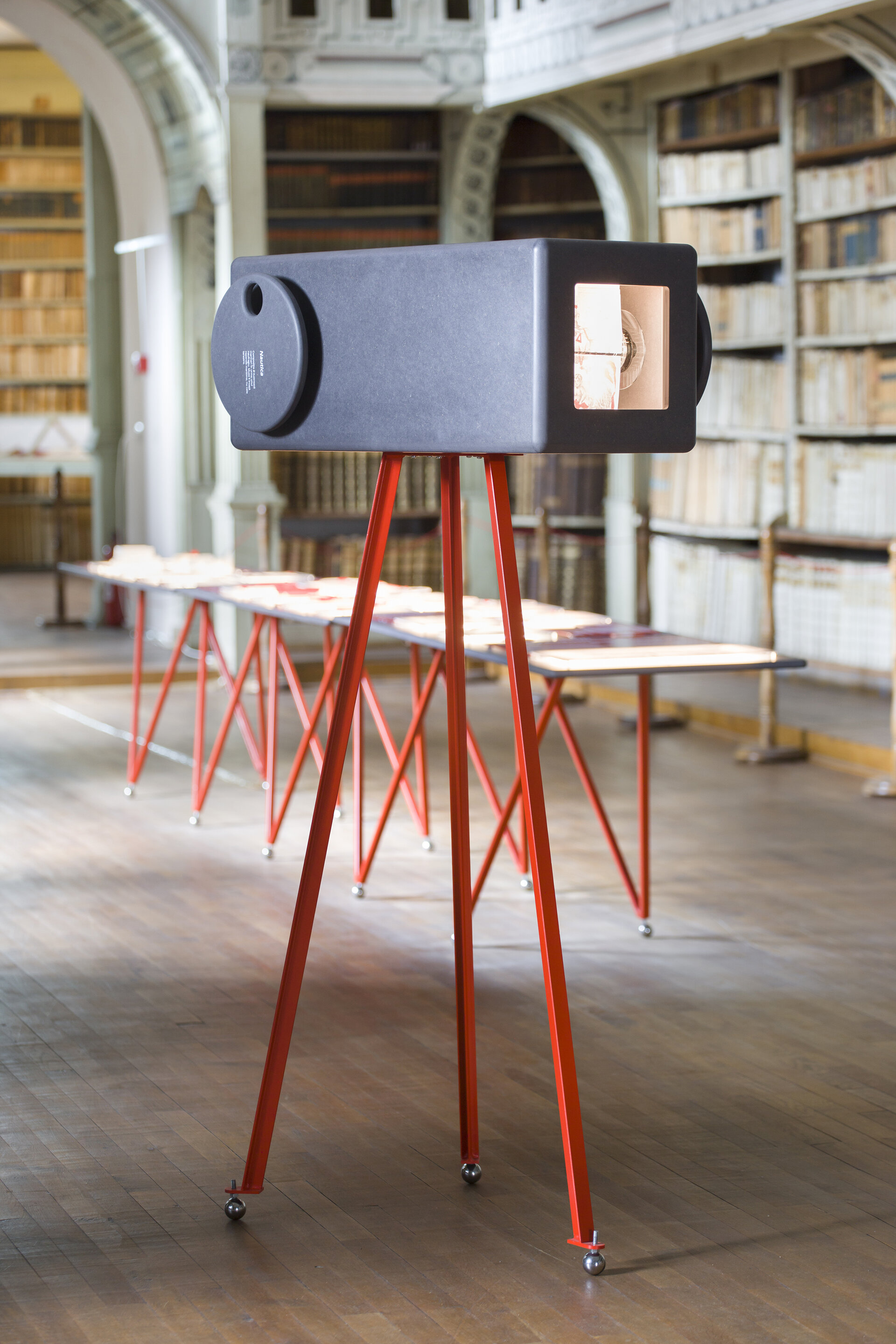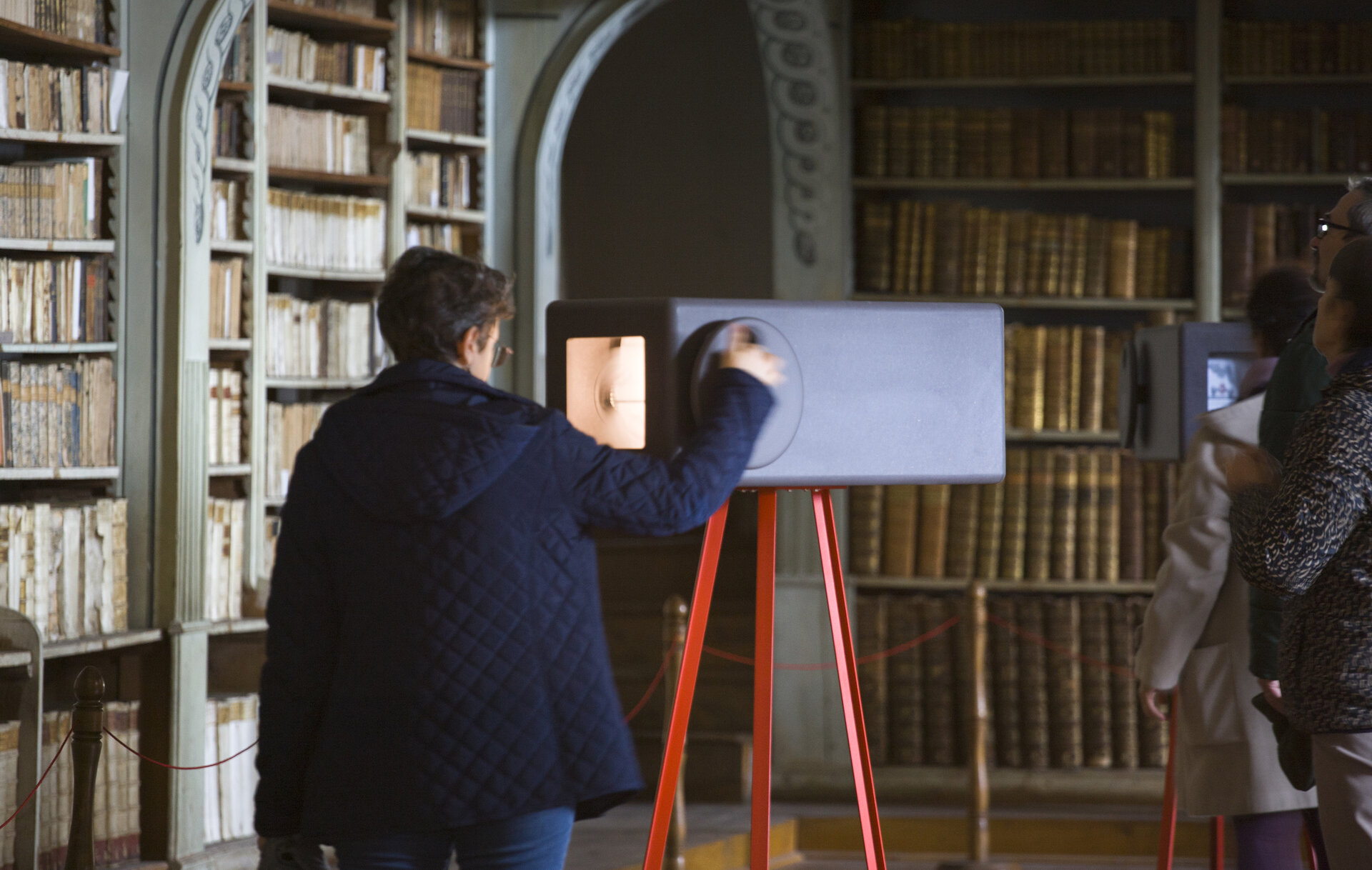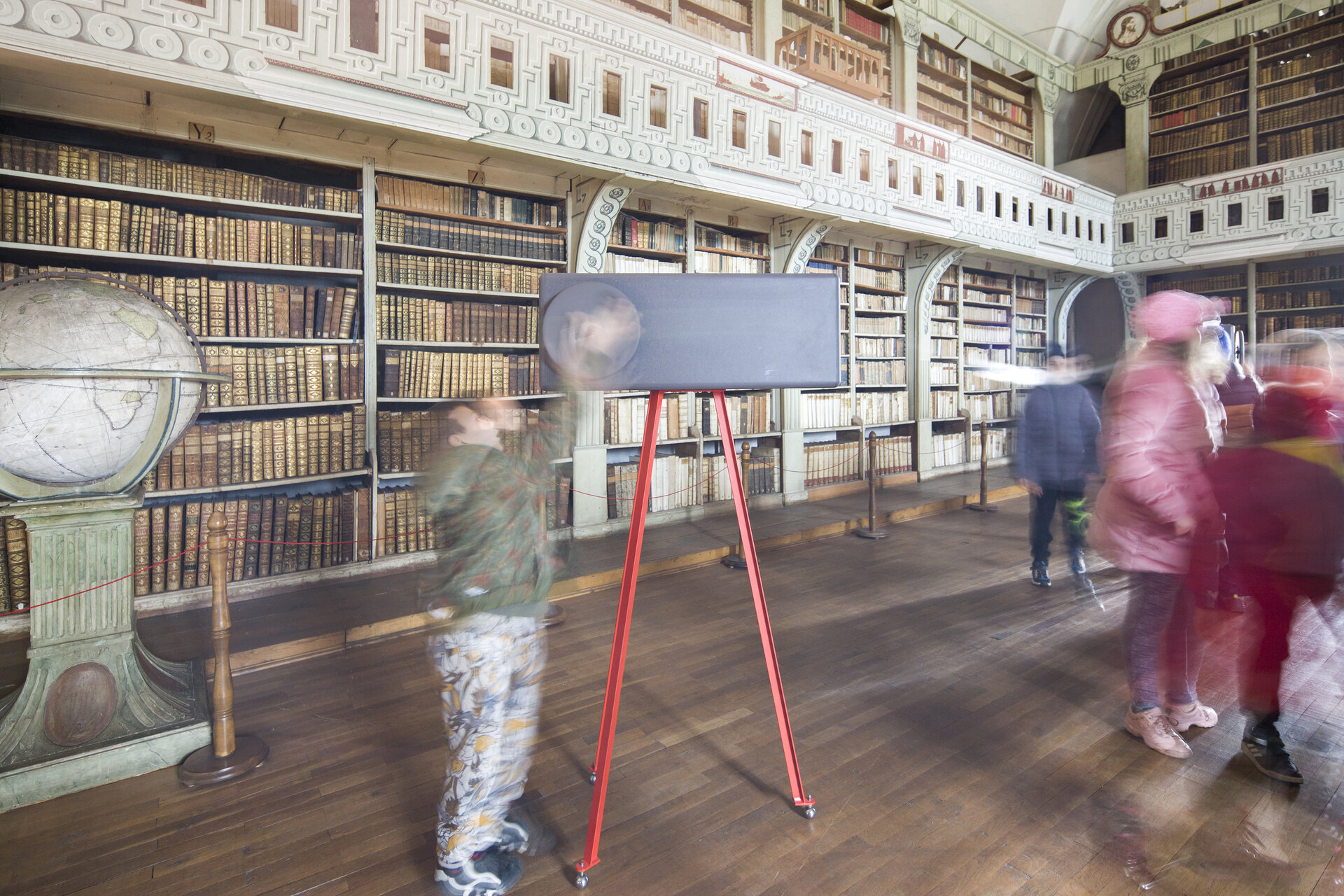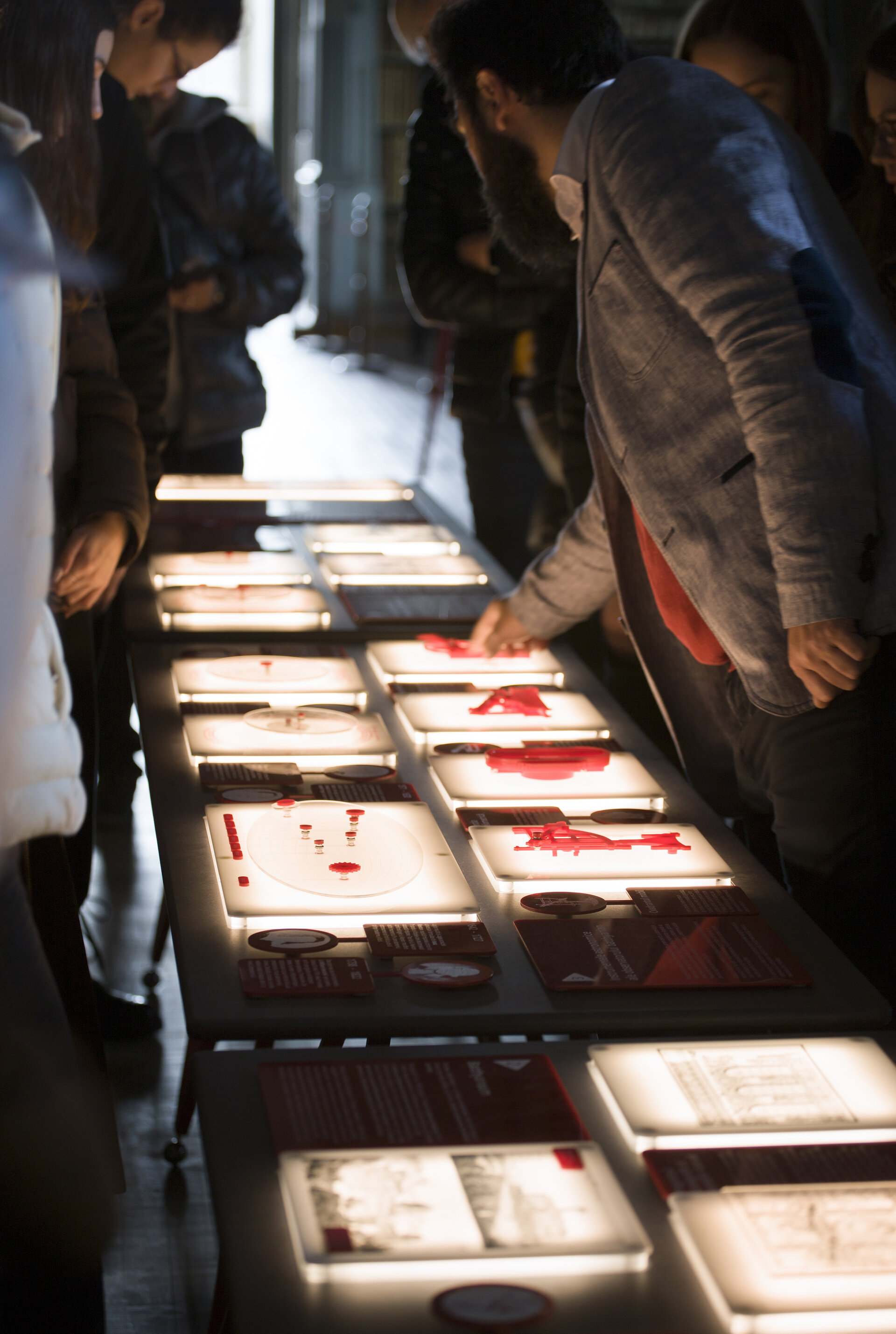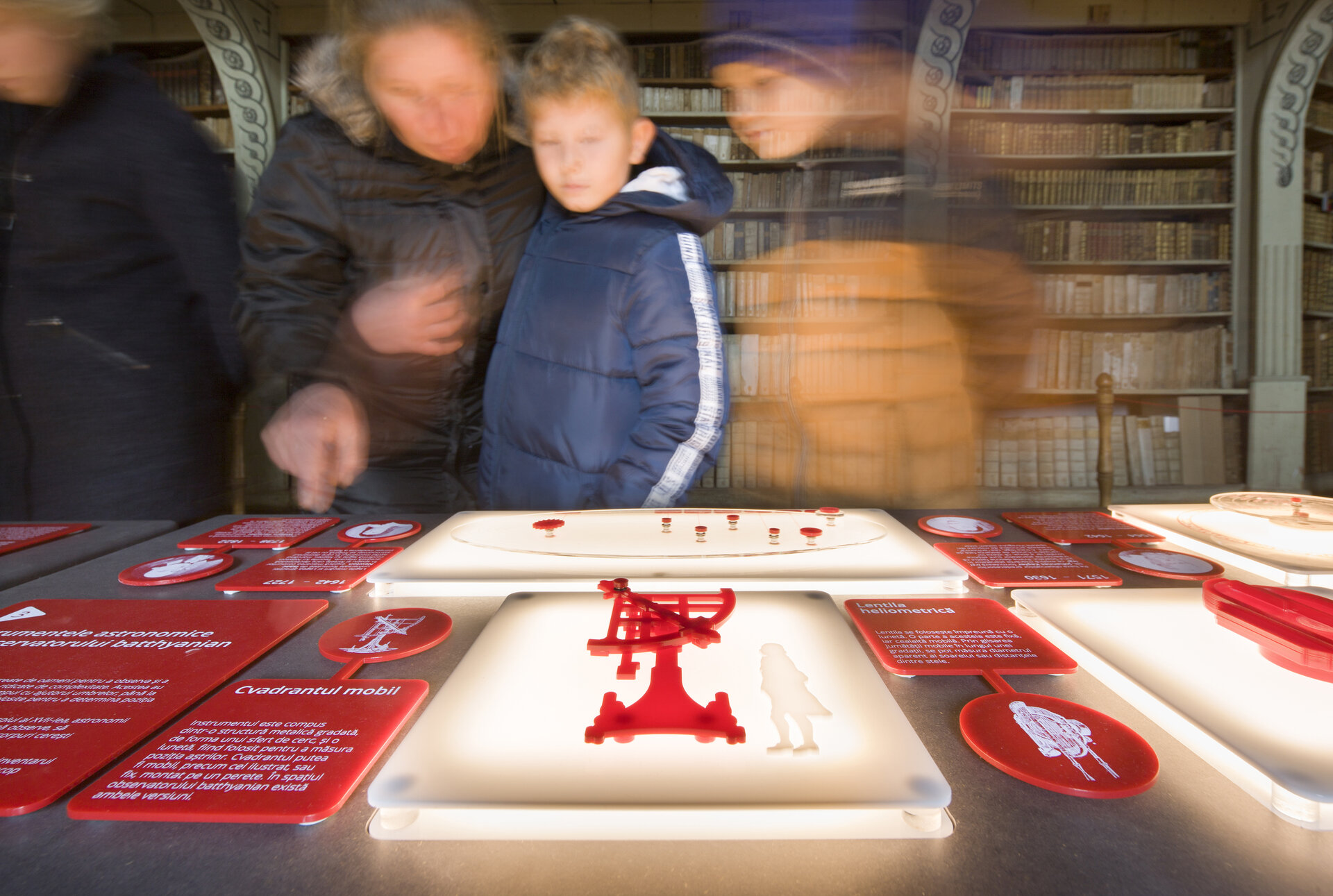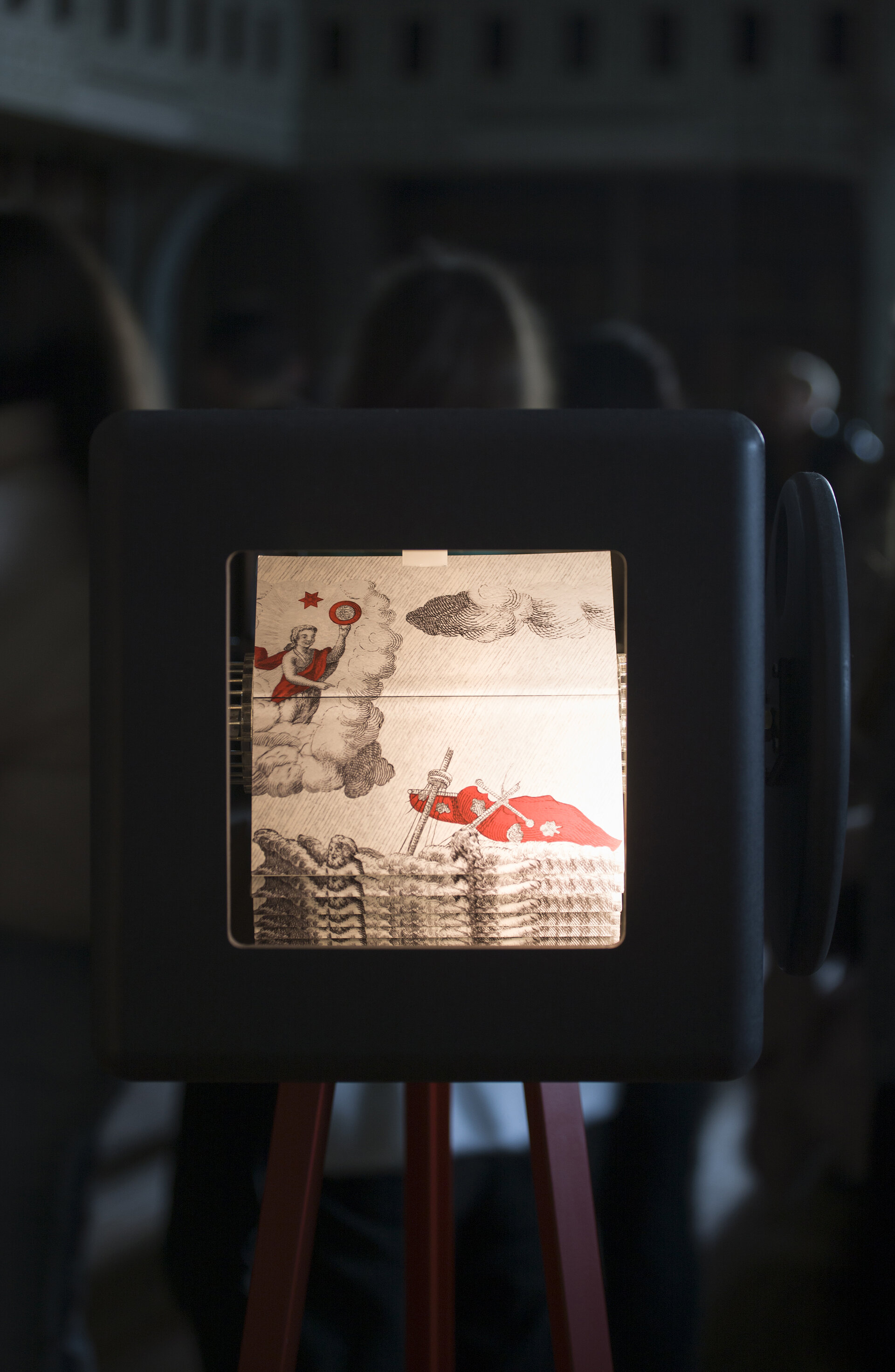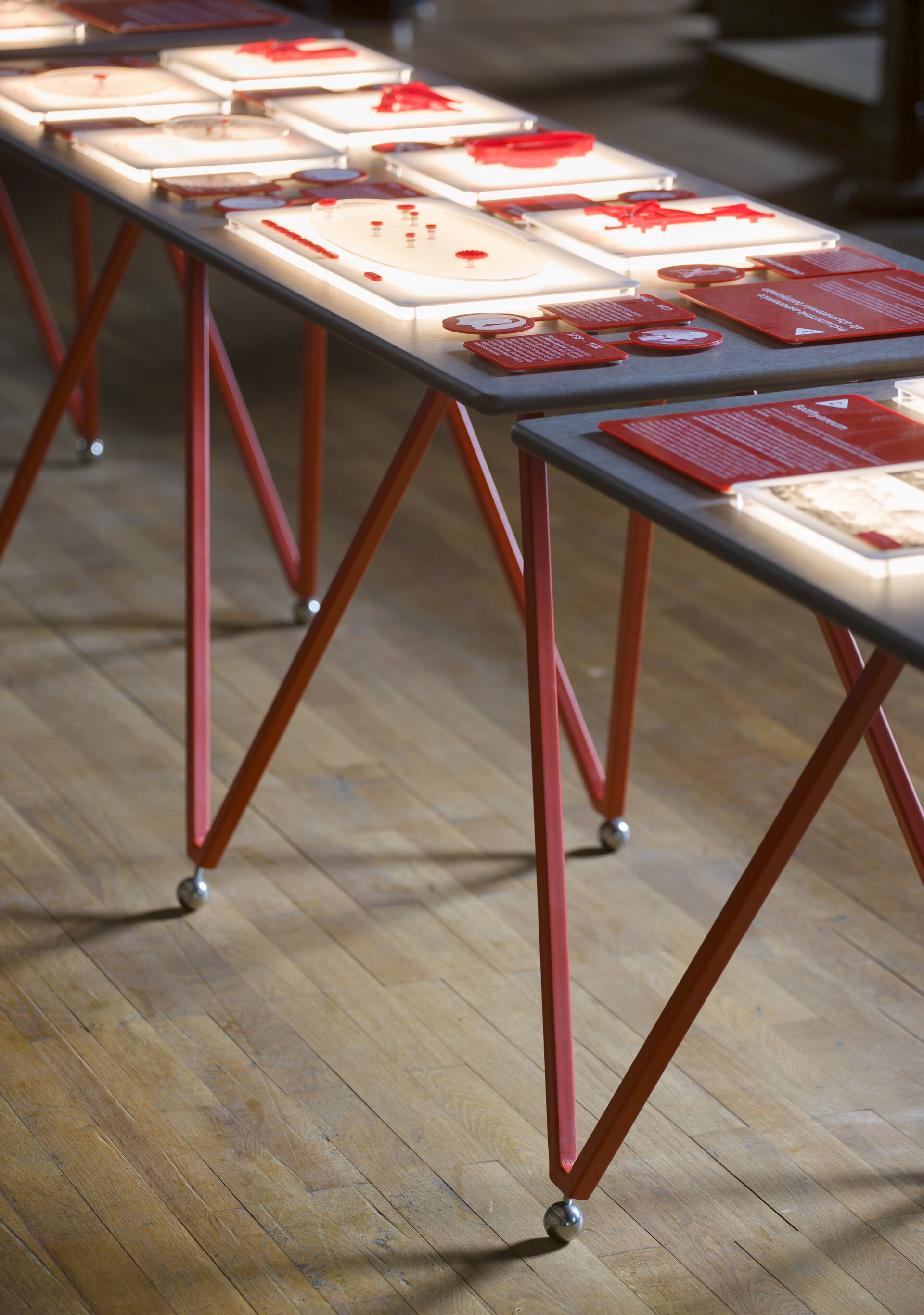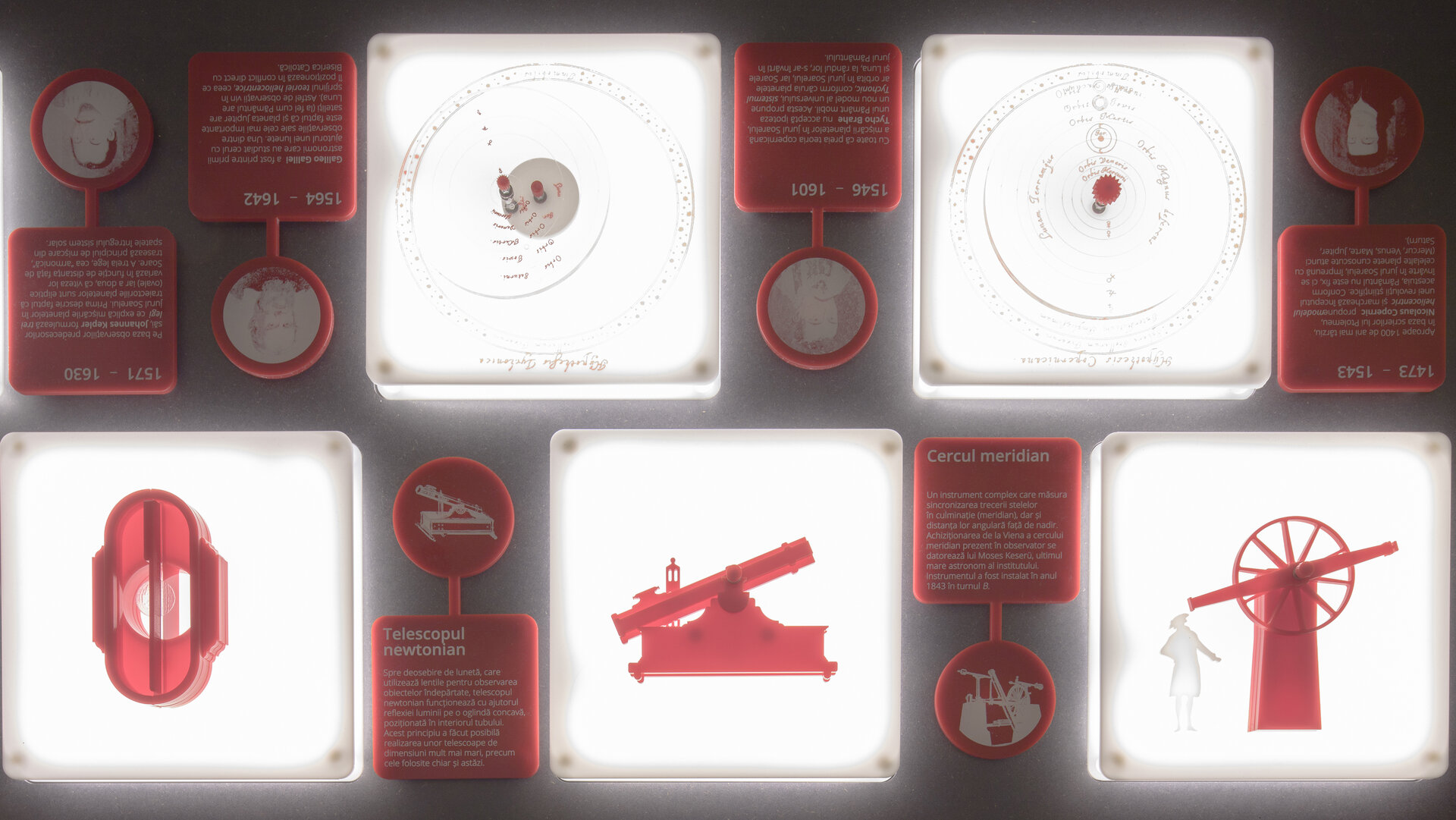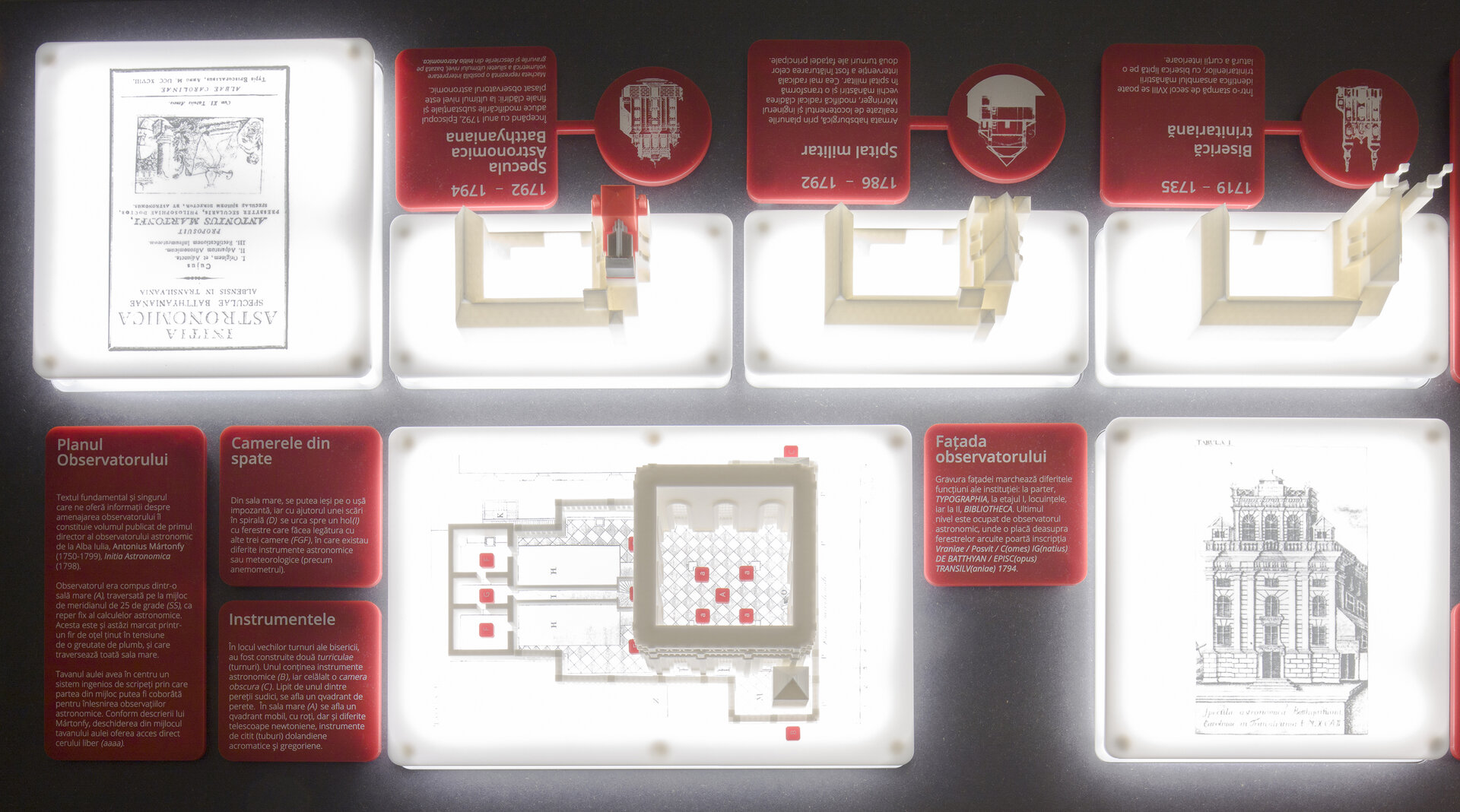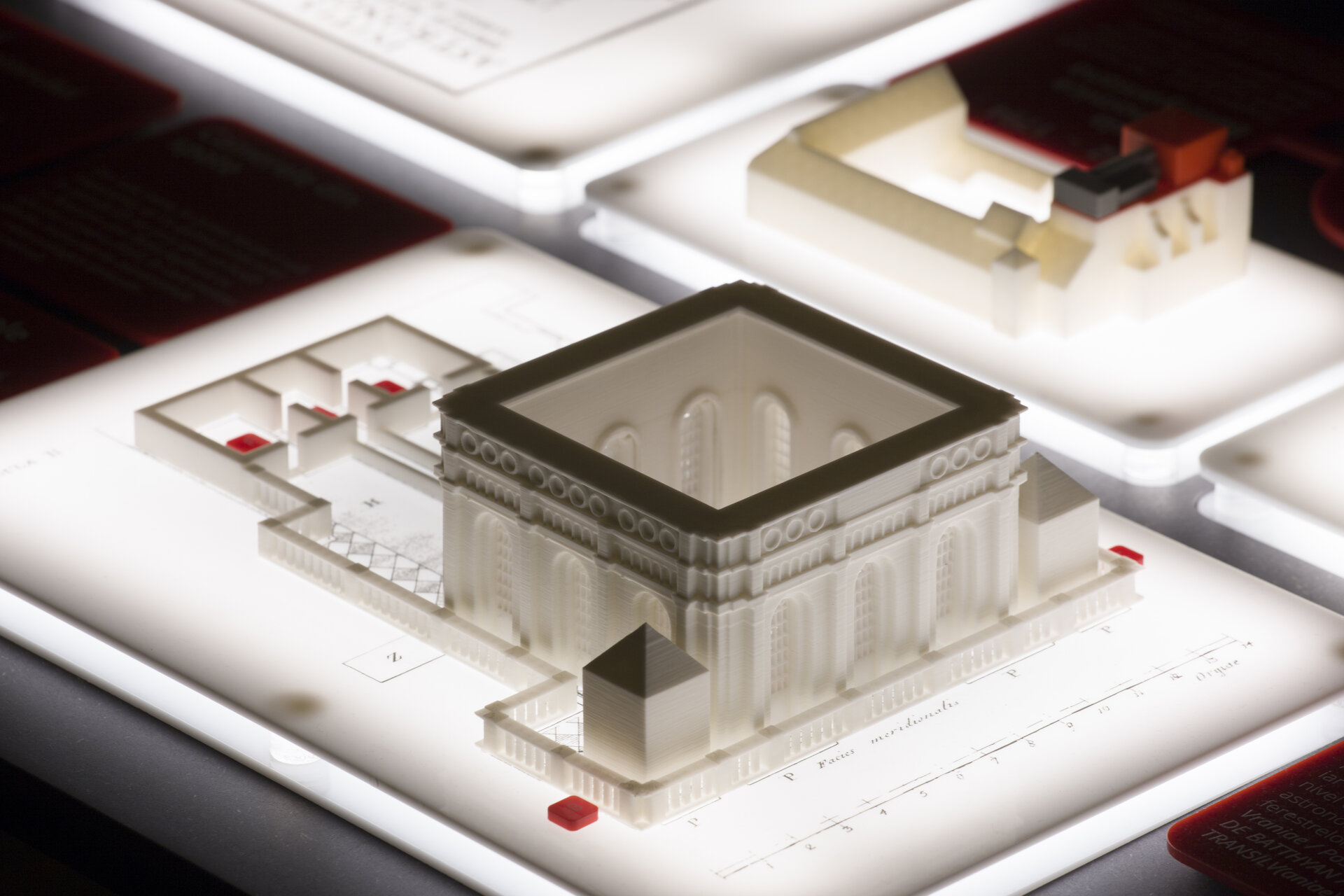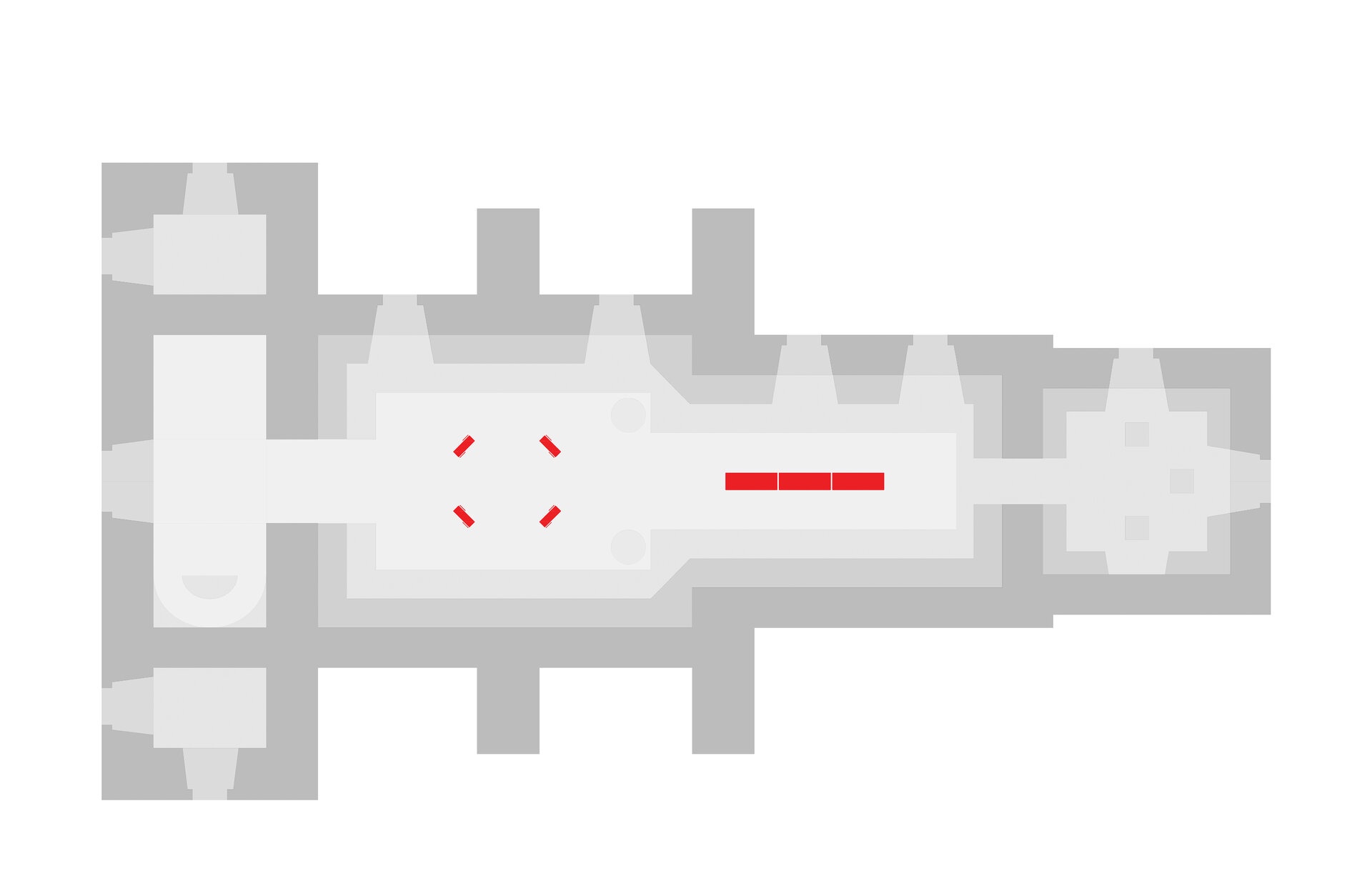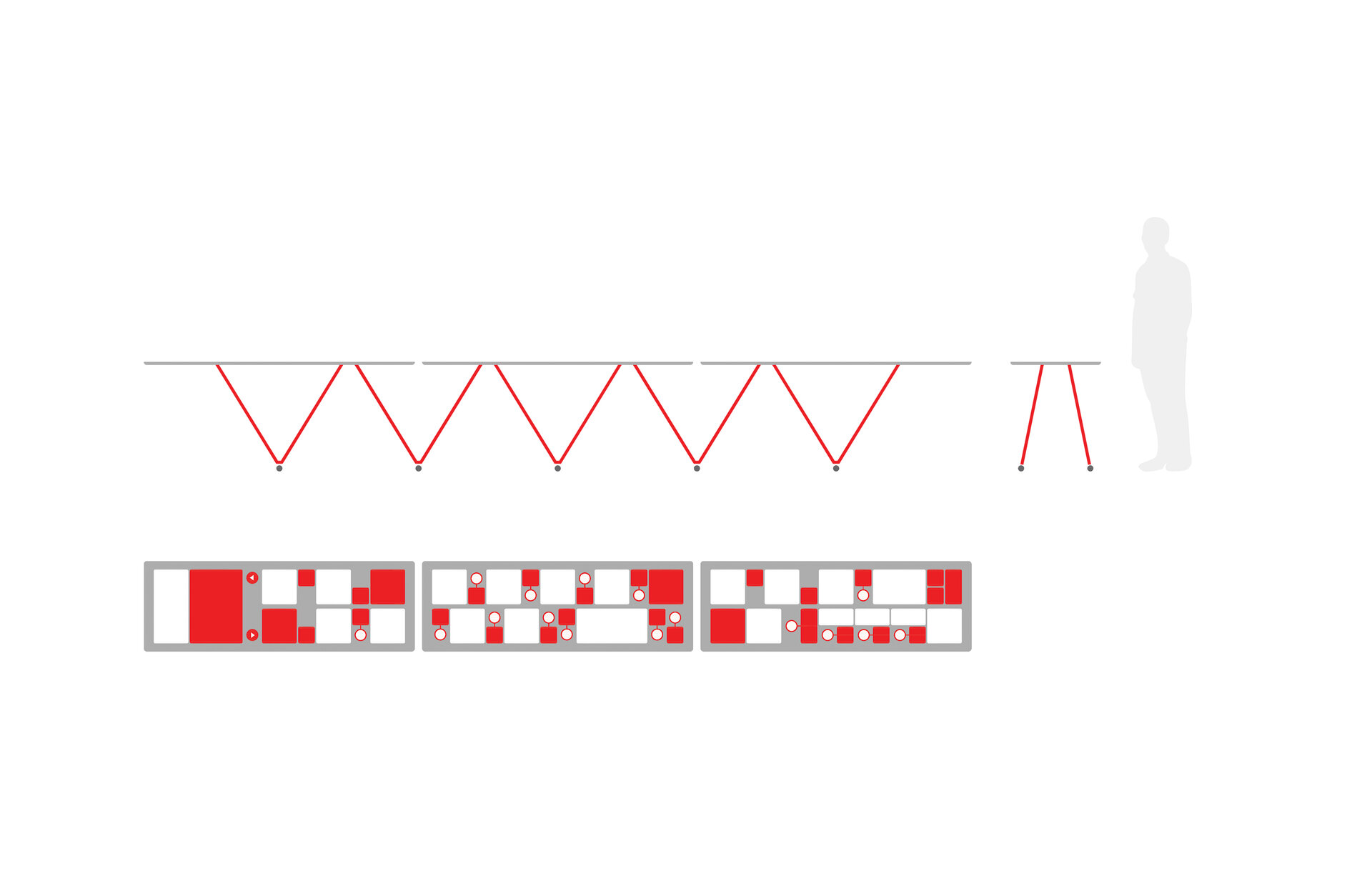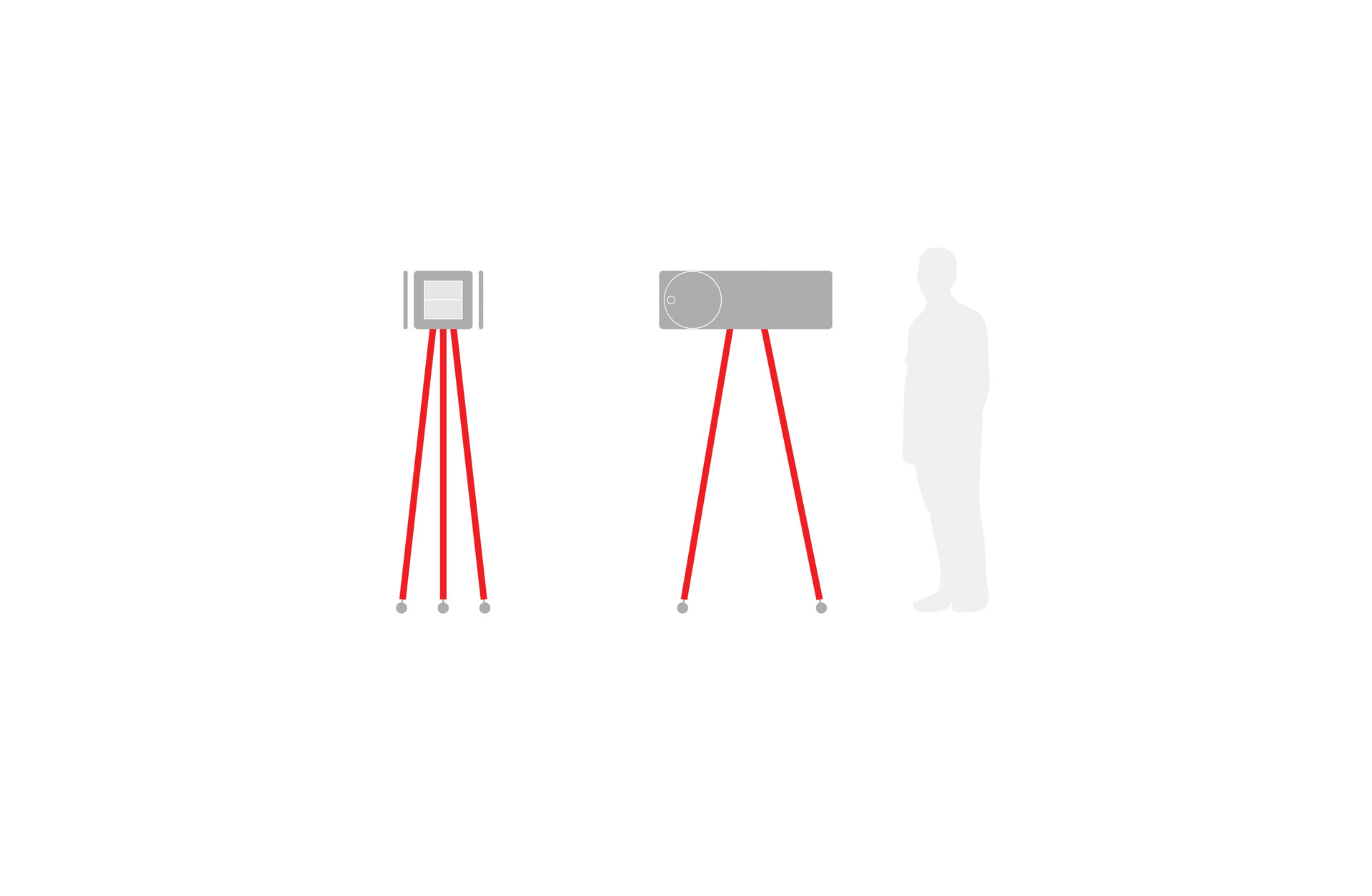
Batthyaneum. Astro-stories and mechanical animations
Authors’ Comment
We find ourselves in an unusual place from Alba Iulia, away from the hustle and bustle of the world, in a somewhat strange-looking building. At first a Trinitarian church and monastery, afterwards a military hospital, then a novel-like twist: Bishop Ignatius of Battyán turns the building into an astronomical institute. And – what's more – a public library. The year was 1798.
Today, on entering Aula Magna, the main hall of the library, among the globes and telescopes you can may also find four boxes, each fixed on a tripod. If you turn the crank on one end of the box, the light turns on and the film starts to play - you are actually flicking through a mechanical animation made up of 24 pages (or frames). Moving onwards, a 5 and a half metre long illuminated "shelf" is floating in the slightly narrower space between the walls packed with old bookcases and manuscripts – it is a support for pages extracted from a story and then turned into models that you can interact with, twirl and drag.
Taken together, these five elements of the exhibition tell the story not of the library room but of another space, one floor above, perched above the semi-cylindrical vaults. Imagine that you can reach the observatory using a winding staircase that climbs somewhere above the library room. The astronomical observatory stands high above, where the church spires once used to do. Thick walls, traces of paintings, a few blind astronomical instruments - for in the meantime they have lost their lenses - and traces of dismantled instruments – each tell a little piece of history.
There we began to piece together part of the Observatory's story, a collage made of on-site explorations and deciphering of plates or a couple of centuries-old texts. Except that the reality would show us one thing, whereas the project imagined in the 18th century engravings told another story altogether. It seemed that the walls, on which traces of the paintings are nowadays barely visible, were once painted with esoteric allegories typical of the Age of Enlightenment. The floor weren’t made of wood, as it is today, but covered with multicoloured tiles. And on the – currently white – ceiling, some 200 years ago nine boxes were traced, which could be opened with pulleys to allow celestial observations. The middle box depicted the Bishop, and, around it, eight allegories illustrating various astronomy-related disciplines could be seen.
At times it was a bit unclear where history ended and where fiction began. Finally, the stories overlapped. Some arranged themselves neatly, horizontally and in chronological order, in four chapters summarising the history of the astronomical observatory: Astronomy, Batthyaneum, Instruments of the Batthyanian Observatory, Years of the Observation.
Others, on the contrary, set themselves in motion. The characters from the engraved ceiling boxes continue to tell their story, but in a new way, interacting with each other in 8 mechanical animations. Chronology, Geography, Geometry, Nautics, Optics, Astrology, Meteorology and Architecture are the personified disciplines that mingle with gods, muses and humans, and the stories continue to recompose themselves with each new turn of the crank.
- Exhibition Design in 2 parts: Romanian Design Week 2020 / Central Exhibition & Diploma 2020
- Three Sisters. An (Un)usually Free Script Based on Chekhov
- Diploma 2019. Exhibition of architecture, art and design university graduates
- Pavilion Untold - Hamza X BT
- Leviathan. In the guts of the collection. Transformation of the second floor of the National Museum of Contemporary Art
- Year One. First Year. Model / Vocabulary / Tools
- Beyond the legend. Neagoe Basarab
- “Herbarium” after “The Book of Plants and Animals” by Simona Popescu
- “Meerkats House” by David Drabek
- The Bucharest of Mircea Eliade
- The Modern Idol. Henry Moore in the Eastern Bloc
- “Journey by Moonlight” after Antal Szerb
- MLMSN_IZO
- Batthyaneum. Astro-stories and mechanical animations
- Coronation Festivitie
- L'Année dernière à Malmaison
- From near to far. Visual mappings of the 2 Mai and Vama Veche space
- Smoke Screens
- Space within space
- Bildfahrzeuge (Image Vehicles). A Peter Jacobi Retrospective / National Museum of Contemporary Art
- Volume of a sleep
- Márta Jakobovits / The Road Travelled / National Museum of Contemporary Art
- This Museum is for you!
